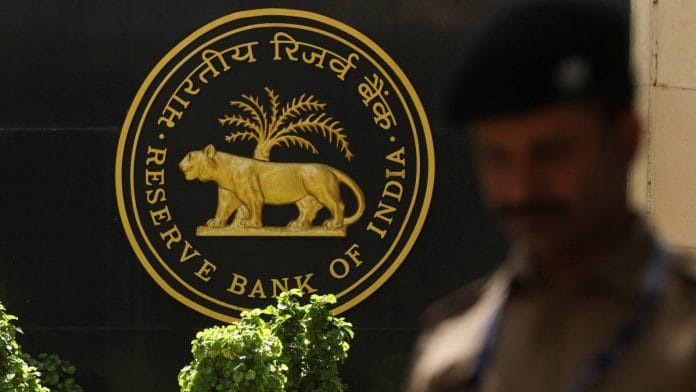New Delhi: The Monetary Policy Committee of the Reserve Bank of India (RBI) has decided to keep its policy rate unchanged at 6.5 percent, marking the tenth consecutive policy where the rate has remained the same. However, in a key shift, the central bank has adopted a “neutral” stance, moving away from its earlier position of “withdrawal of accommodation”.
This change signals the possibility of future rate cuts, potentially as early as December, depending on inflation trends and global economic conditions.
The MPC’s decision to keep the policy repo rate unchanged, announced on 9 October, saw five out of six members opting to leave the rate as it is. However, Dr. Nagesh Kumar, one of MPC’s newly appointed external members, voted for a 25-basis point reduction, hinting at growing discussions around the need for easing the rate.
This was the first meeting of the reconstituted MPC, following the end of the previous committee’s four-year term. During the last two meetings, too, a few members had disagreed with the majority opinion to keep rates unchanged, pushing instead for a rate cut.
During his address Wednesday, RBI Governor Shaktikanta Das cited risks from volatile weather patterns, geopolitical tensions, and high crude oil prices, and emphasised that while inflation has moderated, there is no time for complacency.
He added that the RBI now feels that growth will accelerate later in the financial year than it earlier estimated.
“The MPC considered it appropriate to change the stance to ‘neutral’ and to remain unambiguously focused on a durable alignment of inflation with the target, while supporting growth,” Das said during his address.
“The MPC of the RBI adopted a ‘neutral’ stance, but kept the policy rate unchanged. While this signals circumspection, it also underscores the likelihood of a rate cut in December,” said Dharmakirti Joshi, Chief Economist at CRISIL.
V K Vijayakumar, chief investment strategist at Geojit Financial Services, also pointed towards the possibility of a rate cut in December.
“The RBI governor exuded optimism about the Indian macros when he said, ‘the Indian economy presents a picture of stability and strength’. The governor’s comment that the inflation horse has been brought back to the stable reflects the MPC’s confidence in reining in inflation,” Vijayakumar said. “This confidence has enabled the MPC to change the stance to neutral, which may result in a rate cut by 25 bps in December.”
An accommodative stance indicates a willingness to cut rates, whereas ‘withdrawal of accommodation’—a stance held by the MPC for a while now—indicates a relative unwillingness to cut rates. A neutral stance, as the MPC has now adopted, indicates that it now stands ready to either increase or decrease rates depending on the prevailing macroeconomic conditions.
Growth and inflation forecasts
The RBI retained its growth projection for financial year 2024-25 at 7.2 percent, with Das voicing his confidence in India’s economic resilience. Quarterly growth projections, however, saw some adjustments. Growth for the second quarter of this financial year was revised downwards to 7 percent from 7.2 percent estimated in August, while forecasts for third and fourth quarters were marginally revised upwards.
In other words, a pickup in growth is expected to occur later in the financial year than was predicted in August.
On inflation, the central bank retained its forecast for FY 2024-25 at 4.5 percent, noting progress, but warning of challenges ahead. In comparison, the August announcement had expressed deeper concerns over food inflation, especially after vegetable price shocks. Das compared the inflation situation to “a horse brought back to the stable”, urging continued vigilance to keep it under control, lest it bolts again.
Commenting on the central bank’s cautious stance, CRISIL’s Joshi noted, “Globally, risks and uncertainties persist, with escalating tensions in the Middle East, weather uncertainties and the outcome of US elections in focus. That’s why the RBI took a cautious approach and kept its powder dry.”
Digital payment enhancements & financial stability concerns
A major highlight of the policy was the RBI’s push for enhancement of the digital payment infrastructure. The pre-transaction limit for UPI123Pay, a feature-phone-based payment system, has been doubled to Rs 10,000, while the UPI Lite wallet limit has been increased from Rs 2,000 to Rs 5,000. These moves are aimed at promoting financial inclusion, particularly for users with limited access to smartphones or high-speed internet.
Concerns about the growing risk in the non-banking financial companies (NBFCs) sector were reiterated, particularly regarding unsecured loans and microfinance. Das cautioned NBFCs to adopt robust risk management frameworks to avoid potential financial instability.
The RBI’s decision to maintain rates while signalling flexibility highlights a balanced approach as it navigates inflation risks and the need to support growth. Analysts expect further clarity on the potential for rate cuts in the upcoming December policy review, depending on inflation and global economic developments.
(Edited by Mannat Chugh)
Also read: With RBI’s new Monetary Policy Committee in place, a look at challenges that await its members now






